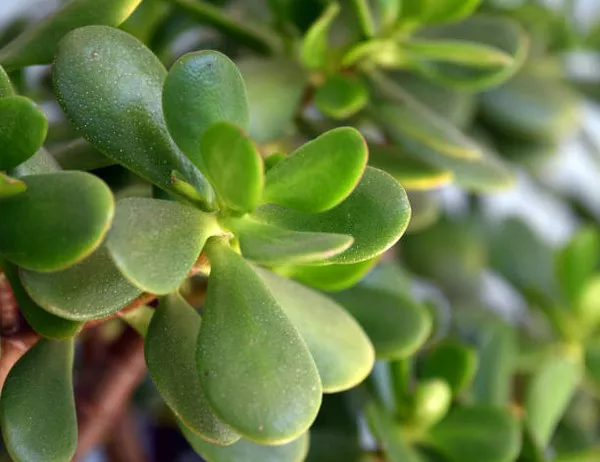Jade plants, with their lush green leaves and intriguingly robust appearance, are a popular choice for indoor and outdoor gardens alike. Beyond their aesthetic appeal, jade plants (Crassula ovata) are also known for their resilience and ease of care, making them a favorite among novice and experienced gardeners alike. However, despite their popularity, many jade plant enthusiasts find themselves wondering: How often do these resilient succulents actually flower?
Understanding the flowering habits of jade plants is not only fascinating from a botanical standpoint but also crucial for those looking to encourage blooming in their own specimens. In this comprehensive article, we delve into the factors influencing the flowering frequency of jade plants, explore the conditions necessary for optimal blooming, and provide practical tips for maximizing your jade plant’s flowering potential.
The Natural Rhythm of Jade Plant Blooms
Jade plants are native to the arid climates of South Africa and Mozambique, where they thrive in dry, rocky environments. In their natural habitat, jade plants typically bloom in late winter to early spring, a time when rainfall is minimal, and temperatures are cooler. This natural blooming cycle is influenced by various environmental factors, including light, temperature, humidity, and soil conditions.
Factors Influencing Jade Plant Flowering Frequency
While jade plants have the inherent ability to bloom, several factors can influence the frequency and intensity of flowering:
1. Age of the Plant: Jade plants typically require several years to reach maturity before they begin to produce flowers. Younger plants may focus their energy on foliage growth rather than flowering.
2. Light Exposure: Adequate light is essential for triggering blooming in jade plants. Insufficient light can inhibit flower formation, while exposure to bright, indirect sunlight promotes robust flowering.
3. Temperature: Jade plants prefer moderate temperatures and are sensitive to extreme fluctuations. Cool nighttime temperatures, coupled with slightly warmer daytime temperatures, mimic their natural habitat and encourage flowering.
4. Watering Regimen: Overwatering can lead to root rot and inhibit flowering in jade plants. Conversely, allowing the soil to dry out between waterings promotes healthier root development and enhances the likelihood of blooming.
5. Soil Quality: Well-draining soil with good aeration is crucial for jade plant health. Poor soil drainage can lead to waterlogged roots, which may stunt growth and impede flowering.
6. Nutrient Availability: While jade plants are relatively low-maintenance, periodic fertilization can provide essential nutrients necessary for healthy growth and flowering. A balanced, water-soluble fertilizer formulated for succulents can be applied during the growing season to support flowering.
7. Pruning Practices: Regular pruning can help maintain the shape and size of jade plants while also stimulating new growth and flowering. Remove dead or leggy branches to encourage the development of new shoots and buds.
Encouraging Blooms: Tips for Success
For jade plant enthusiasts eager to witness the beauty of their plants in full bloom, here are some practical tips to encourage flowering:
1. Provide Adequate Light: Position your jade plant in a location that receives bright, indirect sunlight for several hours each day. South or west-facing windows are ideal, especially during the winter months when daylight hours are shorter.
2. Monitor Temperature: Maintain moderate temperatures around your jade plant, avoiding sudden fluctuations or extremes. During the winter months, protect your plant from drafts and cold temperatures, which can inhibit flowering.
3. Water Wisely: Allow the soil to dry out partially between waterings, ensuring that excess moisture does not accumulate around the roots. Water sparingly during the winter months when growth slows, adjusting your watering regimen based on seasonal changes.
4. Provide Proper Drainage: Use a well-draining potting mix specifically formulated for succulents or amend regular potting soil with perlite or coarse sand to improve drainage. Ensure that your plant’s container has drainage holes to prevent water from pooling at the bottom.
5. Fertilize Sparingly: Apply a balanced, water-soluble fertilizer diluted to half strength during the active growing season (spring and summer). Avoid overfertilizing, as excessive nutrient levels can lead to salt buildup and hinder flowering.
6. Prune Regularly: Remove dead or damaged leaves, as well as any leggy or overgrown branches, to promote a compact, bushy growth habit. Pruning encourages the development of new shoots and increases the likelihood of flowering.
7. Be Patient: Remember that jade plants are slow-growing by nature and may take several years to reach maturity and begin flowering. Be patient and consistent in your care practices, and your efforts will be rewarded with beautiful blooms in due time.
Conclusion
While the flowering frequency of jade plants may vary depending on a variety of factors, with proper care and attention, these resilient succulents can be encouraged to bloom with stunning beauty. By understanding the natural rhythms of jade plant growth and providing optimal growing conditions, gardeners can enjoy the sight of delicate white or pink flowers adorning their beloved plants. Whether displayed as a solitary specimen or incorporated into a vibrant succulent garden, jade plants are sure to captivate with their timeless elegance and enduring charm.


